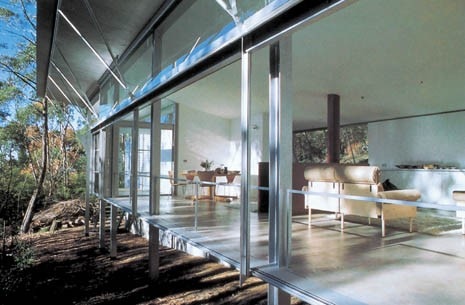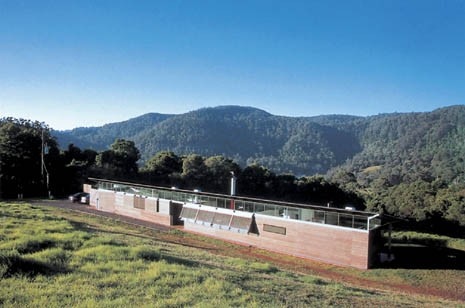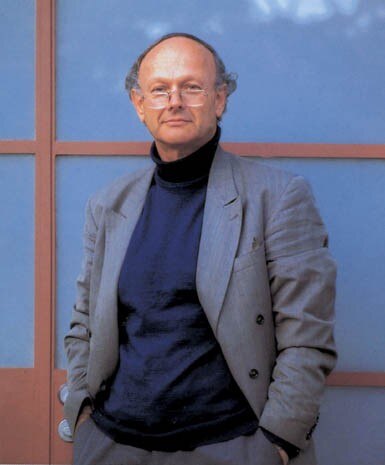One might have thought that if the Pritzker family really wanted to do something to encourage contemporary architecture, they would have chosen something rather more practical than an award scheme. Commissioning better architects to build the Hyatt hotels that made their fortune might have been a good start. They didn’t. Instead they initiated the Pritzker Prize. But despite the unrelenting cheesiness with which the prize’s administrators conduct themselves – producing prize brochures with all the typographical sophistication of a home movie, scouring the world in search of ever more exotic venues for the award presentation (this year it is the Campidoglio in Rome) – they have been surprisingly successful in establishing a certain credibility for the prize. Partly it’s the money. Though the Japanese Prix Imperium is more than twice as generous, $100,000 still carry a certain clout.
And the jury also demands attention. Not so much the specialists, though the writer Ada Louise Huxtable and the architects Carlos Jimenez and Jorge Silvetti are all certainly sensitive and non-dogmatic in their tastes. But Giovanni Agnelli and Lord Rothschild are names that give a certain pause. In any case they were enough to persuade even such hard cases as Rem Koolhaas to get into a dinner jacket for the prize ceremony in Jerusalem two years ago.
But despite the award’s 23-year history, this year’s choice, Glenn Murcutt from Sydney, is the first genuinely surprising name the Pritzker jury has come up with. Almost every previous winner – or laureate, as the Pritzker organization gratingly insists on calling them – has been essentially obvious, in a way that Murcutt is not. Either they are at the end of a career – Philip Johnson or IM Pei – or they have just finished a conspicuously well-thought-of building – Frank Gehry or Jaques Herzog and Pierre de Meuron come to mind. Murcutt is in neither category. All of his work is in Australia — pretty much by choice. Most of it is small scale or domestic. And it’s not so much the individual buildings that have made his name, but the architectural vocabulary. Murcutt is an intriguing combination of militant simplicity and unworldliness, with a sophisticated and refined – though somewhat unchallengingly polite – aesthetic, a synthesis of the industrial Australian vernacular and lyrical modernity. He is disarmingly vulnerable and open – refusing to work with more than a handful of assistants, writing his own business letters and detailing and running his own jobs, rather than managing a sprawling multi-national architectural conglomerate in the manner of so many contemporary practices.
There is none of the usual paraphanalia of architectural discourse. Murcutt likes lightweight structures, simple, unhierarchical plans, sunshine, views and natural settings. His buildings are refreshing and astringent, composed with a spare, finely tuned quality. I once spent one of those perfect Australian days, driving out of Sydney, skirting the creeks that fringe the harbour, and up to Berowra Waters Inn, which Murcutt designed for the Australian chef Kay Bilson. The glass and steel structure was aligned to make the most of a view that was extraordinary, with trees stepping down steep banks to the river’s edge. The food was remarkable – Australian ingredients of impeccable freshness prepared with precision and imagination, mixing the traditions of Europe, America and Asia in a way that was all its own. And it’s easy to see Murcutt’s architecture as exactly that, both exotic and familiar, rich and poor, new world and old world.
There is a certain price to be paid for taking the course that Murcutt has done. The language of Murcutt’s architecture is capable of being reduced to parody as the look of the new Australia. A little corrugated iron, a lot of glass, a few timber decks, and there you have the basis of a slick, superficial style, as far removed from the qualities that Murcutt seeks as a chemical-flavoured new-world chardonnay is from the depth and complexity that the new generation of Australian winemakers is capable of.
Murcutt has a personal history that reflects his architectural past. His father made his money as a gold prospector in New Guinea. He led a roaring rackety life, as Murcutt tells it, as a sheep shearer, boot maker, carpenter and saxophone player who insisted that his son read Jung, Freud and Thoreau as a child. And he built a house in New Guinea in which Murcutt lived until he was five that had a lightweight corrugated-iron roof and perched on stilts above the ground to keep out water and snakes. It seemed like the perfect antidote to the passage from Thoreau that Murcutt delights in quoting: ‘But the civilized man has the habits of the house. His house is his prison, in which he finds himself oppressed and confined, not sheltered and protected. He walks as if the walls would fall in and crush him, and his feet remember the cellar beneath. His muscles are never relaxed. It is a rare thing that he overcomes the house and learns to sit at home in it, and the roof and the floor and walls support themselves, as the sky and trees and earth’.
It’s a mix of the homespun and the arch that has driven his career on a path that has probably done as much for Australia’s architectural identity as Jørn Utzon.




